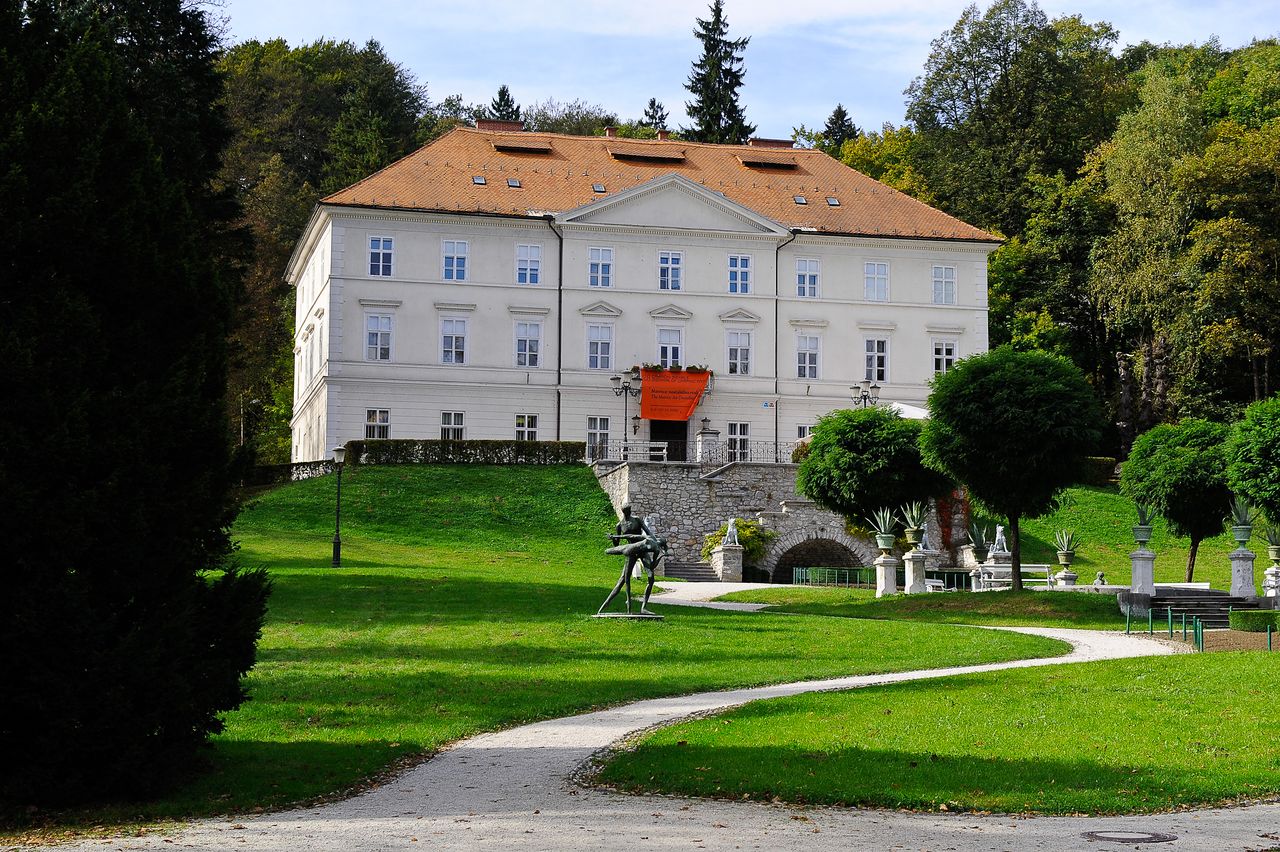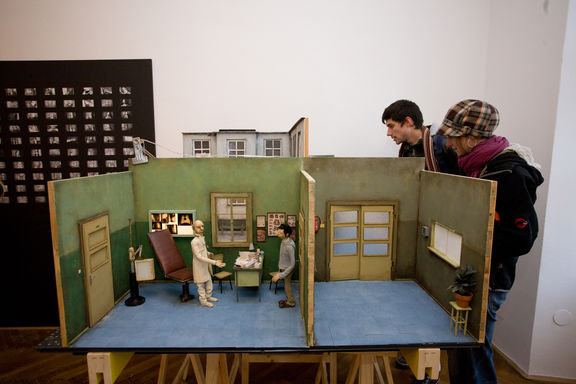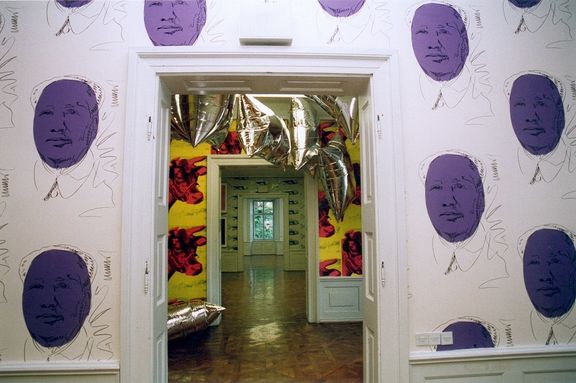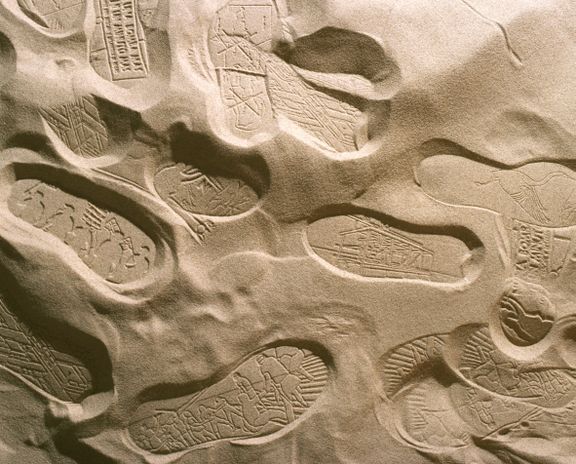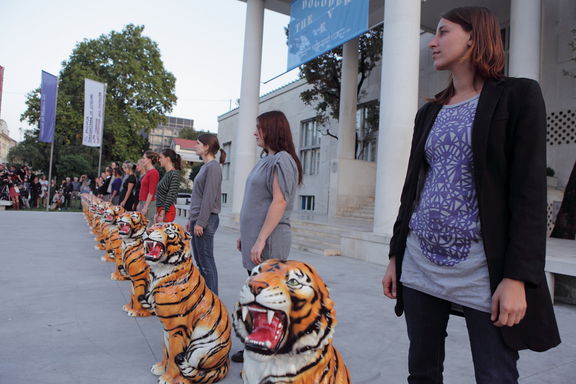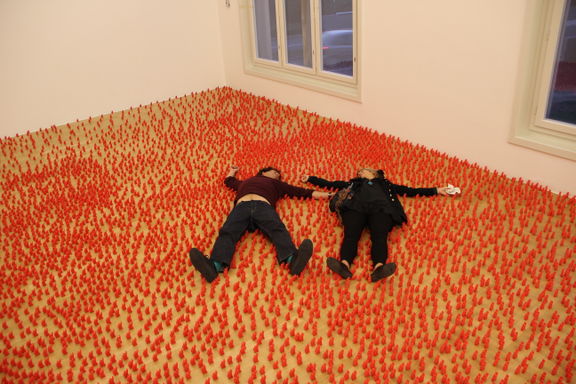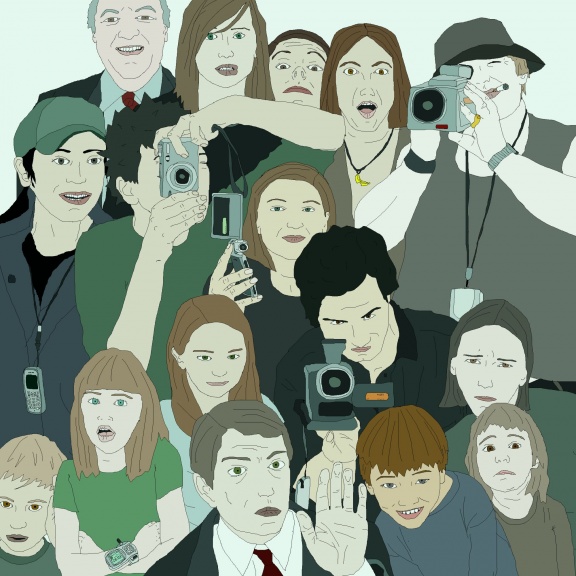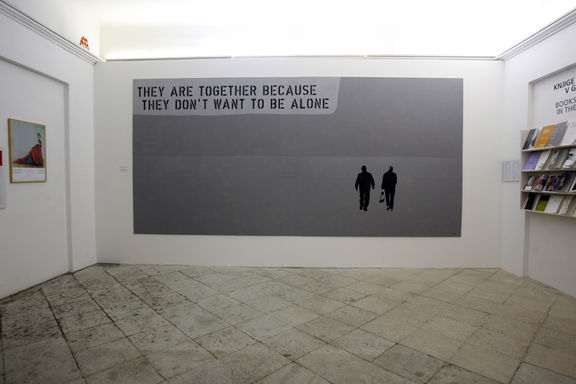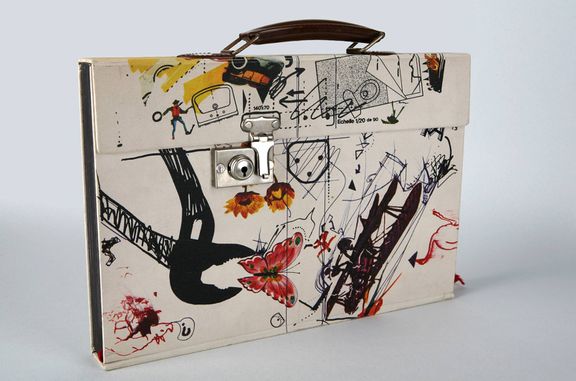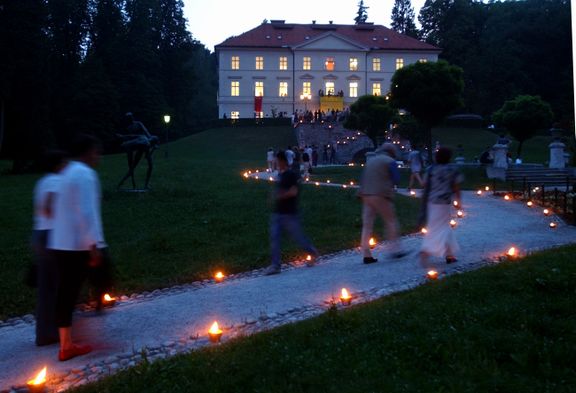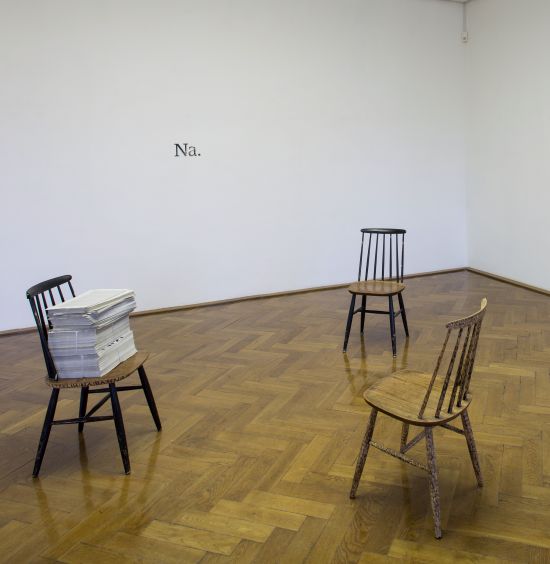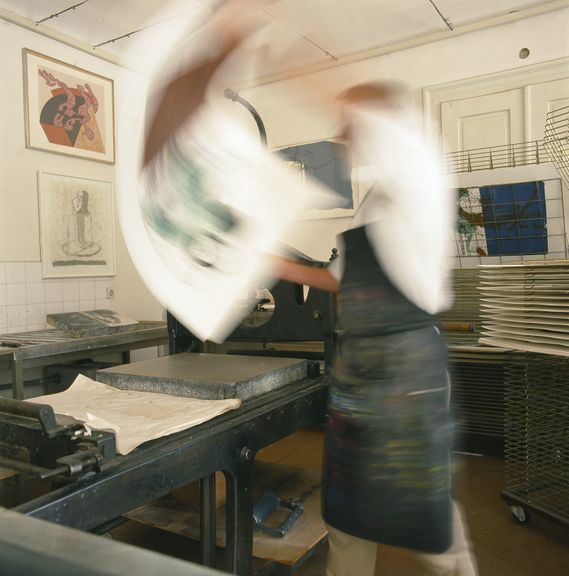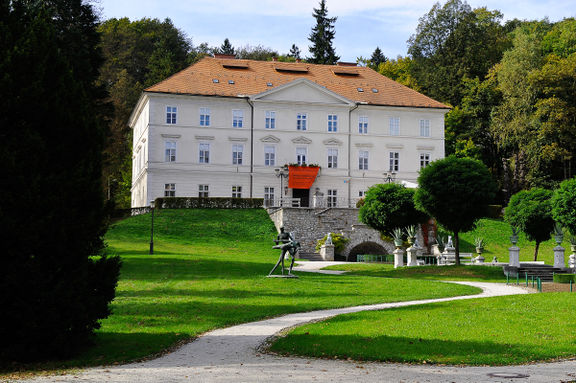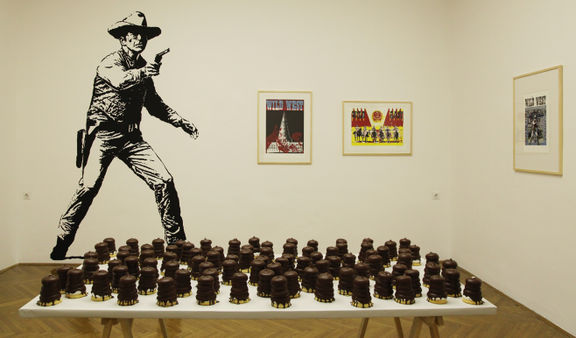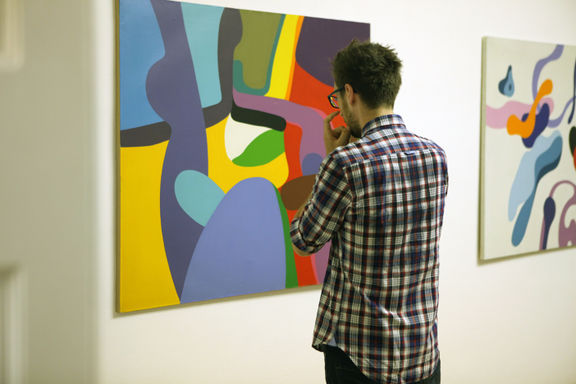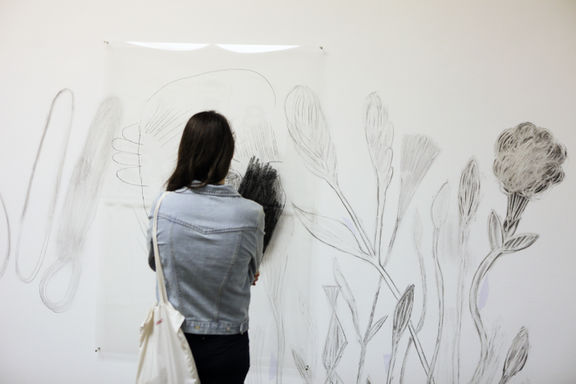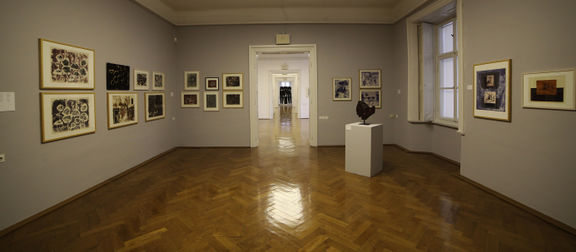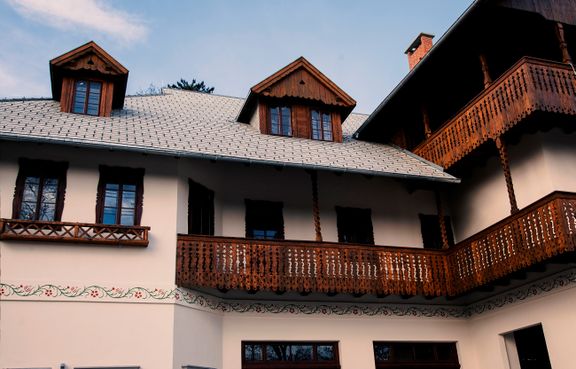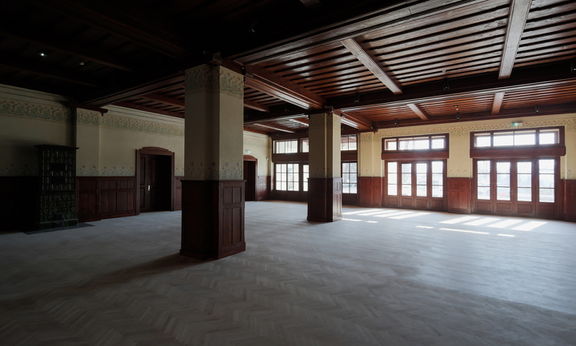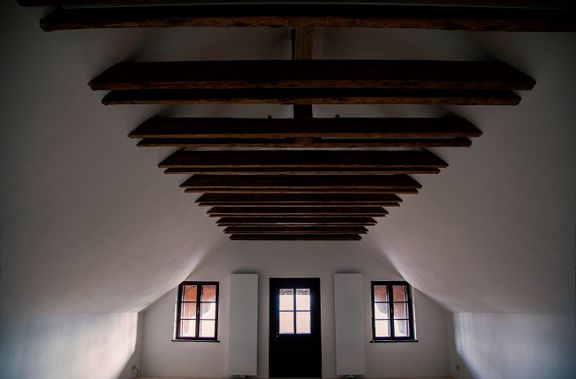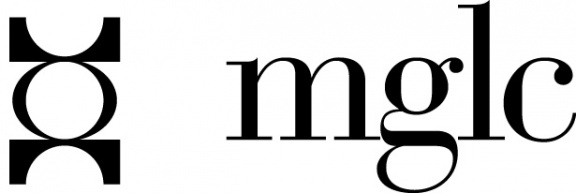Difference between revisions of "International Centre of Graphic Arts, Ljubljana"
(FEATURED Cat added) |
(COVER) |
||
| Line 1: | Line 1: | ||
{{Article | {{Article | ||
| − | | status = PHOTO FEATURED | + | | status = PHOTO FEATURED COVER |
| maintainer = Maja Škerbot | | maintainer = Maja Škerbot | ||
}} | }} | ||
Revision as of 10:25, 7 September 2011

-
11 Sep 2024
The opening of an exhibition of prints by various Slovenian artists titled "Contemporary Slovenian Graphics" from the collection of the International Centre of Graphic Arts, Ljubljana. Among the exhibited artists are printmaker and visual artist Zora Stanič, the Laibach collective, painter and printmaker David Kucler, Berlin based artist Neža Jurman, alias Nez Pez and the artistic duo Mateja Rojc and Simona Hudolin named Small but dangers. The exhibition is held In cooperation with International Centre of Graphic Arts, Ljubljana, organised and supported by the Embassy of the Republic of Slovenia Berlin and SKICA Berlin, Slovenian Cultural Centre.
-
2 Apr 2023
A symposium Uprooted Visions: How We Create symposium accompanying exhibition organised by Edinburgh Printmakers, in collaboration with the International Centre of Graphic Arts, Ljubljana. Supported by the Embassy of the Republic of Slovenia London
-
to
2 Apr 2023
2 Jul 2023
Uprooted Visions exhibition in the framework of the 2-year migrant artists residencies programme led by Edinburgh Printmakers, in collaboration with the International Centre of Graphic Arts, Ljubljana. Supported by the Embassy of the Republic of Slovenia London
-
to
8 May 2018
22 May 2016
North Macedonia Skopje Osten Gallery
The exhibition of paintings, drawings and prints by Jože Ciuha, curated by Barbara Savenc and Marija Skočir (International Centre of Graphic Arts, Ljubljana), supported by the Embassy of the Republic of Slovenia Skopje,
-
to
20 Sep 2016
1 Oct 2016
Simple, Fun and Dangerous, an exhibition featuring works by Mladen Stropnik and Small But Dangers (Mateja Rojc and Simon Hudolin) from the collection of the International Centre of Graphic Arts, Ljubljana,
-
to
12 May 2016
21 Aug 2016
Repetition, an exhibition featuring works by Ištvan Išt Huzjan as well as works by Danilo Jejčič, Lojze Logar, Tinca Stegovec, Edvard Zajec and others from the collection of the International Centre of Graphic Arts, Ljubljana,
-
14 Jan 2015
A talk with artist Janez Janša at the launch of his book Life II [in Progress] (Maska Institute, International Centre of Graphic Arts, Ljubljana)
-
to
18 Dec 2013
7 Jan 2014
Black on White, an exhibition of artists’ magazines and newspapers in Slovenia, organised by the P.A.R.A.S.I.T.E. Institute, International Centre of Graphic Arts, Ljubljana, and Maribor Art Gallery,
-
to
3 Oct 2013
17 Nov 2013
+386 Impressions, an exhibition of Slovene contemporary graphic art curated by Breda Škrjanec (International Centre of Graphic Arts, Ljubljana), featuring works by Stripburger (Strip Core), Katja Skušek and Nataša Skušek (Zlato stegno), Vesna Drnovšek, Tanja Lažetić, Tomaž Tomažin, Sašo Sedlaček, Marija Mojca Pungerčar, Svetlana Jakimovska Rodić, and Varl Petra, supported by the Embassy of the Republic of Slovenia Madrid
-
to
25 Sep 2012
8 Dec 2012
Change the Colour! exhibition by BridA (Tom Kerševan, Sendi Mango, Jurij Pavlica), produced by International Centre of Graphic Arts, Ljubljana
Background
The idea of establishing MGLC dates back to the mid-1970s as a direct consequence of the development of the Ljubljana International Biennial of Graphic Art and the enormous growth of contemporary graphic art production in Slovenia during that period, especially represented by the "Ljubljana Graphic Art School".
This idea was advanced by the secretary of the Ljubljana International Biennial of Graphic Art Zoran Kržišnik, the then-director of the Museum of Modern Art. In 1981 the MGLC Foundation commenced its first activities and began to adapt the Tivoli Mansion. In 1987 the MGLC moved from the Museum of Modern Art to the renovated mansion positioned majestically at the end of the Plečnik "promenade" in Ljubljana's Tivoli Park.
Mission
Besides the organisation of the Biennial of Graphic Arts and the organisation of other contemporary art exhibitions MGLC also maintains a collection of Slovene and international prints, artists' books, art projects in magazines and on billboards, and other printed art materials. It also edits limited print editions in the techniques of lithography, silkscreen, and intaglio and offers workshops about printing techniques.
Collection of art prints and artists' books
The MGLC collection contains more than 4,500 items created since 1945. Since 2000, the collection has grown by approximately 4,000 items of artist-created printed matter by international and Slovene artists. These works include artist’s books, posters, newspapers, magazines, postcards, printed invitations, greeting cards, fanzines, and artists’ archives.
The collection is also composed of art prints of some representatives of the École de Paris such as Zadkine and Picasso, works of international established artists as Robert Rauschenberg, Victor Vasarely, Emilio Vedova, Maria Bonomi and also representatives of the "Ljubljana Graphics School". The collection also includes artists' books of international and Slovene artists such as OHO Group, West East Publications edited by Franci Zagoričnik, Damien Hirst and further great names of art history such as Boltansky, Lewitt, Opalka, Buren, Roth, Reiner, and Yves Klein.
Each year MGLC acquires some works. Beside the works of 4 Slovene artists (Vesna Črnivec, Janez Knez, Tanja Lažetić, and Petra Varl) in 2008 the MGLC also acquired 4 works of foreign artists including White Cube Book of James Lee Byars from 1986 and 54 publications of Bernard Villers entitled Publishing House Remorqueur and Nouveau Remorqueur Archives.
In 2010 the Slovene painter and printmaker Tinca Stegovec donated to MGLC her entire print oeuvre, including her matrices and four drawings, as well as a large portion of her library.
Programme
MGLC organises regular contemporary arts exhibitions, including surveys of national artistic creativity and exhibitions by individual artists, often in collaboration with international institutions such as the British Council Slovenia, French Cultural Institute Charles Nodier, Ljubljana or private collection such as Rene Block Edition from Berlin. In non-biennial years MGLC prepares 4 to 8 exhibitions.
In 2010 the We Want to be Free as the Fathers Were exhibition featured 18 Slovene painters of the younger generation. The parallel exhibitions juxtaposed Sol LeWitt's The Book: A Machine That Makes Art with Ivo Mršnik's Reflections of Consciousness series of prints and drawings. The Quartet–Four Biennials Reflected in Prints exhibition presented print portfolios from four biennials (Hamburg 1985, Sydney 1990, Istanbul 1995, and Cetinje 2005).
In 2009 MGLC featured May ’68 in Paris and the Student Movement in Ljubljana, 1968–1972. Posters, Film, and Photographs – an exhibition presenting around 80 posters, loaned from the Centre de la Gravure et de l’Image imprimée in La Louvière (Belgium). Created for the events in Paris, these images have become synonymous with urban struggle. The protests which changed the traditional values of society soon spread across the world, encompassed Yugoslavia as well, including Ljubljana. The student movement in Ljubljana, from 1968 to 1972 was presented through a documentary film by Majda Širca, the student newspapers Tribuna and SP (standing for slovensko podzemlje – "the Slovene underground"), leaflets and announcements, and photographs of Tone Stojko, Edi Šelhaus, and Žare Veselič.
In 2009 for the very first time in Slovenia MGLC featured and exhibition inspired in and mirroring the phenomenon of computer games entitled Screenshots: I Was Disappointed by Lara Croft prepared by an external group of Slovene curators Milan Kleč, Lev Menaše, Helena Pivec, Barbara Novakovič, and Boštjan Borič.
In 2008 the MGLC also featured an exhibition conveying the tumultuous times of the 1980s in Slovenia entitled FV, Alternative Scene of the Eighties shedding light on the important social and artistic events of a period in which significant shifts were happening on the margins of the socialist society that also made possible the appearance of the first gay and lesbian clubs, independent publishing houses, multimedia groups, and other forms of counterculture creativity. On this occasion Neven Korda, a video artist and one of the protagonists, donated his entire archive to the MGLC collection.
MGLC also stages solo presentations of Slovene and foreign artists. Recently projects have been featured by Štefan Galič, Regina Pessoa, Gabrijel Stupica, Zora Stančič and Petra Varl, Herman Gvardjančič, Laibach (Gesamtkunst Laibach, Fundamentals 1980–1990, 2010), and others.
Publishing
MCLC produces in-depth theoretical publications, full-colour illustrated exhibition catalogues, and other books. Most recently they published the extensive retrospective study Mnemosyne: The Time of the Ljubljana Biennial of Graphic Arts.
Education
Besides workshops for professional artists, the MGLC organises workshops of various graphic techniques (silkscreen, lithography, woodcutting, linocutting, dry point, and etching) and other special events for children.
Occasionally the MGLC organises also symposia, lectures and public discussions with invited artists, publishers, curators and experts from abroad and guided visits to accompany exhibitions.
See also
External Links
- International Centre of Graphic Arts website (in English and Slovenian)
Gallery
- Articles maintained by Maja Škerbot
- HAS IMAGE
- Museums
- Visual arts
- Design
- Visual arts venues
- Visual arts galleries
- Visual arts museums
- Design exhibition venues
- Venues
- Galleries
- Exhibition venues
- Visual arts producers
- Producers
- Exhibition organisers
- Photography
- Comic art
- Festival organisers
- Event organisers
- Archives
- Visual arts publishers
- Publishers



